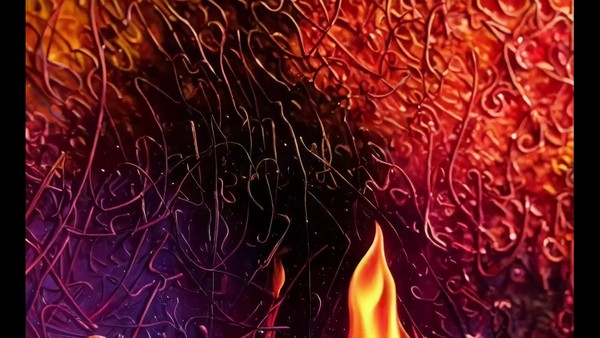Cannes Lions
Eyedar
AREA 23, AN IPG HEALTH NETWORK COMPANY, New York / HORIZON THERAPEUTICS / 2022
Awards:


Overview
Entries
Credits
OVERVIEW
Background
Echolocation is a powerful visualization tool for the blind. It’s a form of sensory substitution using clicking sounds that bounce off surfaces to map one’s surroundings. Inspired by the life-changing power of echolocation and determined to change the fact that only 1% of the blind can echolocate, we created Eyedar.
In 2020 when LiDAR, a 3D scanning technology, became a standard hardware feature of iPhones, the potential to make echolocation-like skills accessible became a reality. Combining this technology with the fundamentals of echolocation, we set out to bring this life-changing skill to the world.
To achieve this, Horizon had to overcome challenges. As a new player in ophthalmology, the brand had low awareness among patients, HCPs, and advocacy groups. From the beginning, Horizon partnered with the blind community, echolocation experts, a blind-led UX team, and neuroscientists to guide them in developing the first sensory substitution app for the blind.
Idea
Eyedar is the first app that teaches the blind to visualize their world with sound. It was inspired by echolocation—a form of sensory substitution where the blind use the sense of hearing to visualize their surroundings.
Eyedar digitizes the principles of echolocation, making it an accessible and learnable skill. By leveraging the newly available LiDAR 3D technology in iPhones, Eyedar maps a user’s environment and translates it into 3D audio data, allowing the blind to visualize their surroundings. Changes in pitch, volume, and spatial sound convey information on the size, shape, distance, and direction of objects.
Eyedar provides sequential training, beginning with basic sound and obstacle recognition and progressively challenges users to visualize more complex soundscapes and navigate with greater confidence. Over time, the process is designed to become second nature and allow users to build a clearer picture of the world around them.
Strategy
For Eyedar to live up to its enormous potential, it needed to demonstrate an understanding of a blind person’s needs, habits, and challenges. To that end, Horizon consulted and partnered with blind users from the very beginning, including those experienced with echlocation.
As the needs of the blind are often misunderstood by sighted designers and developers, Eyedar was designed by a blind-led UX team. The team built the app with universal best practices of accessibility design and took a blind-first approach. This meant eliminating a visual interface and exclusively using voice commands and gestures to navigate the Eyedar app.
As we progress, the input of users will be vital for further development, allowing for the app to grow ever more useful for the blind population.
Execution
Horizon is a healthcare company that manufactures multiple treatments, including for two diseases that can cause blindness. But their commitment to their patients goes beyond preventing vision loss to sponsoring and supporting accessibility solutions for anyone who is blind or visually impaired.
We knew that echolocation could allow the blind to visualize with sound, allowing them to navigate with greater confidence. But only 1% of the blind community practice this skill because it’s not widely taught.
We developed Eyedar, a Horizon-sponsored app, over the course of 4 years to make echolocation a learnable and accessible skill for the entire global blind community.
September 2018
Completion of study by our technology consultant, Dr Yi Yang, professor at Pennsylvania State University, whose research served as our proof-of-concept for LiDAR-based echolocation and visualization. tinyurl.com/3t8ep68k
October 2020
The potential for an app like Eyedar to make echolocation-like skills realistically accessible came in late 2020 when LiDAR become a standard hardware feature of new iPhones.
September 2021
Initial experiments with LiDAR soundscape translation in iOS.
October 2021-December 2021
iOS app build out; app prototypes were developed and tested.
January 2022-Ongoing
Alpha and beta testing took place in the first quarter of 2022 with select members of the blind community using the app in Test Flight. Their feedback was crucial to the app refinement and optimization
April 2022
Eyedar launched on the app store.
April 2022
The Eyedar codebase was released under an MIT open-source license on GitHub, making it available for continued innovation and customization for the blind community.
April 2022 and Beyond
Launching is only the beginning. Eyedar is currently compatible with iPhones Pro 12 and 13, but as LiDAR and other computer vision technology becomes standard on phones, it will become even more accessible.
Outcome
Eyedar has the potential to redefine what it means to be blind. Echolocation has already shown how it can positively impact the lives of those who use it, and the only impediment to widespread adoption is the accessibility of learning the skill. Eyedar removes that.
Eyedar launched in April of 2022. With nearly 50 million blind people in the world, smartphone usage near-ubiquitous, and LiDAR and other computer vision technology increasingly available, Eyedar can reach an unprecedented proportion of the blind community to make echolocation a learnable and accessible skill.
Eyedar is available for free in the app store. It is also freely available as an open-sourced app with its codebase released under an MIT open-source license on GitHub. This will allow for continued innovation and customization of the app to best benefit the blind community.
Similar Campaigns
6 items


